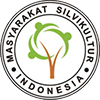Pedoman Penulis
Umum
Redaksi hanya menerima naskah yang belum pernah diterbitkan dan tidak sedang dalam proses penerbitan di jurnal/terbitan ilmiah yang lain. Pemuatan dalam terbitan Jurnal Hutan Tropika untuk artikel yang ternyata telah/sedang akan diterbitkan di jurnal/terbitan ilmiah lain sepenuhnya menjadi tanggung jawab penulis.
Bentuk Naskah
Jurnal Hutan Tropika menerima naskah dalam bentuk Hasil Penelitian, Catatan Penelitian, dan Ulasan baik dalam bahasa Indonesia maupun bahasa Inggris. Hasil Penelitian harus ringkas, fokus pada hasil-hasil terbaru dan data. Jumlah tidak lebih dari 20 halaman cetak dan dengan jumlah pustaka antara 10-30. Catatan Penelitian merupakan naskah singkat dari penelitian baru pada lingkup terbatas dan tidak lebih dari 8 halaman cetak. Ulasan bersifat mengulas penelitian-penelitian terbaru pada topik khusus. Bagian-bagian dari naskah Ulasan mengikuti tata cara penulisan di bawah, kecuali tidak perlu bagian “Bahan dan Metode“, dan “Hasil dan Pembahasan”. Jumlah halaman Ulasan bisa bervariasi menyesuaikan dari pentingnya tema dan berisi lebih dari 20 pustaka.
Pengiriman Naskah
Naskah dikirim ke:
Redaksi Jurnal Hutan Tropika
Jurusan Kehutanan Fakultas Pertanian Universitas Palangka Raya
Jalan Yos Sudarso, Tunjung Nyaho, Palangka Raya, 73111
Telepon: 08125042765 - 081521560387 – 08112647787
E-mail: jhtrop@upr.ac.id
situs web: https://e-journal.upr.ac.id/index.php/JHT
Format Naskah
- Naskah diketik dengan 1 1/2 spasi pada kertas HVS kuarto (A4)
- Margin semua sisi 2,5 cm, huruf Times New Roman, ukuran 12 point
- Jumlah halaman minimal 5, maksimal 20
- Nomor halaman diletakkan di ujung kanan bawah
- Gambar dan tabel ditempat pada bagian dimana seharusnya berada.
Urutan Penyusutan Naskah:
- Judul (maksimum 20 kata) : harus ringkas, spesifik, dan berkaitan. Ditulis dalam bahasa Indonesia dan bahasa Inggris. Singkatan dan rumus agar dihindari sebisa mungkin.
- Nama lengkap penulis (jangan disingkat)
- Nama, alamat lengkap, dan kode pos lembaga/ institusi
- Nama, telepon dan e-mail penulis untuk korespondensi
- Abstrak dalam bahasa Inggris (maksimum 300 kata) : ditulis dalam satu paragraf. Abstrak harus memberikan gambaran jelas dari isi keseluruhan naskah melalui penjelasan singkat dari tujuan, metoda, hasil-hasil utama penelitian dan kesimpulannya.
- Kata kunci dalam bahasa Inggris (maksimum 5 kata) : mengandung 5 kata kunci yang mewakili isi utama dari naskah. Hindari kata-kata atau istilah-istilah yang terlalu umum (misalnya kata ‘and’, ‘of’) dan tidak terlalu banyak menggunakan singkatan : hanya singkatan yang sangat umum bisa dipakai.
- Abstrak dalam bahasa Indonesia (maksimum 300 kata) : ditulis dalam satu paragraf. Abstrak harus memberikan gambaran jelas dari isi keseluruhan naskah melalui penjelasan singkat dari tujuan, metoda, hasil-hasil utama penelitian dan kesimpulannya.
- Kata kunci dalam bahasa Indonesia (maksimum 5 kata) mengandung 5 kata kunci yang mewakili isi utama dari naskah. Hindari kata-kata atau istilah-istilah yang terlalu umum (misalnya kata ‘dan’, ‘atau’) dan tidak terlalu banyak menggunakan singkatan : hanya singkatan yang sangat umum bisa dipakai.
- Pendahuluan : secara ringkas menjelaskan penelitian yang dilakukan dalam konteks yang luas dan arti pentingnya. Tujuan penelitian perlu ditegaskan dan bagaimana kemanfaatannya. Tema yang sedang diteliti harus diulas secara cermat dan pustaka-pustaka penting harus disitir. Penulisan dilakukan agar tetap bisa dibaca oleh peneliti lainnya yang awam terhadap tema yang diteliti. Tinjauan pustaka dan ringkasan hasil yang terlalu detail agar dihindari.
- Bahan dan Metode : bagian ini harus dibagi-bagi menjadi beberapa sub-bab yang mencakup desain studi, tipe bahan dan alat, dan tipe analisis yang digunakan. Penjelasan harus memadai sehingga peneliti lainnya bisa mengulang dan melakukan dengan hasil sama dengan yang dipublikasikan. Metode yang sudah dipublikasikan bisa diringkas dengan menyitir pustakanya: bila terdapat perubahan yang berarti maka harus dijelaskan secara detail.
- Hasil dan Pembahasan : bagian ini bisa dibagi-bagi lagi menjadi sub-bab dengan judul yang pendek dan informatif. Hasil, penafsiran, dan kesimpulan penelitian dijelaskan secara ringkas dan cermat. Pembahasan harus menyinggung pentingnya hasil penelitian pada kondisi sekarang atau hasil penelitian lainnya tetapi tanpa mengulang-ulang hasilnya. Temuan-temuan dan implikasinya harus dibahas dalam konteks yang lebih luas serta ditegaskan bagaimana untuk arah penelitian lanjutannya.
- Kesimpulan : berisi poin-poin penting dari hasil penelitian. Isi tidak boleh persis dengan yang ada di Abstrak/Intisari, tetapi lebih menjelaskan hasil-hasil yang penting, kemungkinan penerapan, serta tindak lanjut penelitian ke depan.
- Ucapan Terima Kasih : bagian ini tidak wajib. Apabila diperlukan, ditulis institusi yang membiayai beserta skema/nomor hibahnya. Ucapan terima kasih juga berlaku untuk personel yang membantu bahan penelitian, keahlian, waktu selama penelitian tetapi tidak sebagai penulis.
- Daftar Pustaka : diurutkan sesuai alfabet dan berisi sebagian besar pustaka-pustaka primer (minimal 10 pustaka primer) dan terbitan dalam sepuluh tahun terakhir (minimal 50% dari jumlah pustaka).
Format Gambar
- Gambar (dalam format JPEG) serta keterangannya ditulis dalam bahasa Indonesia dan bahasa Inggris. Apabila sebuah gambar hanya berisi data yang sedikit, maka data tersebut disebutkan dalam teks.
- Foto (dalam format JPEG) harus memiliki kekontrasan dan resolusi yang jelas untuk foto berwarna maupun hitam-putih. Foto harus berkaitan dengan teks, diberi judul, dan dinomori.
- Ilustrasi : Dapat berupa gambar yang dibuat secara profesional baik dengan cara manual atau komputer. Bila ada gambar harus dalam format JPEG. Gambar grafik; maksimum lebar 8,5 cm dibuat dalam program Microsoft Excel. Angka dan huruf keterangan gambar menggunakan huruf bertipe Constantia ukuran 9 point.
Format Tabel
- Tabel serta keterangannya ditulis dalam bahasa Indonesia dan bahasa Inggris. Apabila sebuah tabel hanya berisi data yang sedikit, maka data tersebut disebutkan dalam teks.
- Angka dan huruf menggunakan huruf bertipe Times New Roman ukuran 9 point. Kepanjangan untuk singkatan yang ada dalam tabel diberikan keterangan di bawah tabel.
Penyitiran
Penyitiran dalam teks
- Penulis harus memastikan pustaka yang disitir dalam teks sudah tercantum dalam Daftar Pustaka, demikian pula sebaliknya. Penyitiran mengacu pada format Conservation Biology.
- Penyitiran secara umum dilakukan dengan memakai tanda kurung, contoh : Tiap hektar ekosistem mangrove dapat menyimpan karbon empat kali lebih banyak dibanding dengan ekosistem lainnya (Daniel et al. 2011). Penyitiran di atas lebih dianjurkan daripada: Menurut Daniel et al. (2011), Tiap hektar ekosistem mangrove dapat menyimpan karbon empat kali lebih banyak dibanding dengan ekosistem lainnya.
- Tanda ’&’ digunakan bila menyitir antara nama belakang penulis dalam tanda kurung : (Mayer & Koch 2007).
- Apabila penyitiran tidak dalam tanda kurung, maka digunakan kata ‘dan’ untuk memisahkan penulisnya : “ Nilai yang diperoleh penelitian ini lebih kecil dari nilai kayu Pinus taeda oleh Zicherman dan Thomas (1972).”
- Untuk penyitiran lebih dari 2 penulis, maka digunakan ‘et al.’ yang tidak dimiringkan : (Komiyama et al. 2008).
- Urutan penyitiran di dalam tanda kurung adalah dari pustaka yang lama sampai terbaru dan dipisahkan oleh tanda titik koma (;) misalnya (Siddique et al. 2012; Alemaheyu et al. 2014).
- Urutan penyitiran untuk penulis yang sama dipisahkan oleh tanda koma (,) misalnya (Widyorini et al. 2015, 2016; Umemura et al. 2014).
Bagian Daftar Pustaka
- Judul ditulis secara lengkap.
- Apabila lebih dari 10 penulis, maka menggunakan et al. (mis. Singarimbun M, et al.) sebagai pengganti semua penulisnya.
- Naskah yang masih dalam proses telaah dan komunikasi personal tidak bisa dimasukkan dalam Daftar Pustaka.
- Prosidings dan abstrak dari seminar bisa disitir apabila ada penerbit dan lokasinya (atau ada organisasi yang mengeluarkan dokumen tersebut).
- Penulisan daftar pustaka sesuai dengan APA Style. Disarankan menggunakan aplikasi Referensi Manager, seperti Mendeley atau Zotero atau EndNote. Contoh penulisan daftar pustaka sebagai berikut:
Artikel Jurnal/ Terbitan Berkala:
Wahyudi, Sih W., N. Hidayat, H. Joni, H. Toni. 2015. Medicinal Sapling Plants Diversity at the Peat Swamp Forest in Central Kalimantan, Indonesia. International Journal of Applied Engineering Research Vol 10, No 11, 2015, pp. 28681-28690.
Numata, S., Yasuda M., Okuda T., Kachi, N. 2006. Canopy gap dynamics of two different forest stand in a malaysian lowland rain forest. Journal of Tropical Forest Science, 18(2) pp.109-116.
Artikel Prosiding:
Gordinho, L. E. Nacuray, M.M., Cardinoza and Lasco. 2003. Climate Change Mitigation Through Carbon Sequestration : The Forest Ecosystem of Timor Leste. Proceeding of National Workshop on Climate Change. Dili.
Buku:
MacKinnon, K., Hatta, G., Hakimah, H., Arthur, M. 2000. Ecology of Kalimantan. Series of Ecology of Indonesia, Book III. Canadian International Development Agency (CIDA), Prenhallindo, Jakarta.
Terjemahan:
Ary, D., Yacobs, L. C., Razavieh, A. 2001. Pengantar Penelitian Pendidikan. (A. Furchan, Trans). Surabaya : Usaha Nasional. (Original Work published 1976)
Artikel atau Bagian dari Buku:
O’Neil, J. M.,& Egan, J. (1999). Men’s and women’s gender role journeys: A metaphor for healing, transition, and transformation. dalam B. R. Wainrib (Ed.), Gender issues across the life cycle (pp. 107-123). New York, NY: Springer.
Skripsi/Tesis/Disertasi:
Indrawan A. 2000. Perkembangan Suksesi Tegakan Hutan Alam Setelah Penebangan dalam Sistem Tebang Pilih Tanam Indonesia (Disertasi). Bogor: Program Pascasarjana, IPB.
Sumber elektronik/ publikasi di website:
Artikel/ jurnal periodik dengan DOI:
Wooldridge, M. S., & Shapka, J. (2012). Playing with technology: electronic toys. Journal of Applied Developmental Psychology, 33(5), 211-218. http://dx.doi.org/10.1016/j.appdev.2012.05.005.
Artikel/ jurnal periodik dengan tanpa DOI:
Kenneth, I. A. (2000). A Buddist response to the nature of human rights. Journal of Buddist Ethics, 8. Retrieved from http://www.cac.psu.edu/jbe/twocont.html
Artikel surat kabar
Parker, T. (2008, May 6). Psychiatry handbook linked to drug industry. The New York Time. Retrieved from http://well.blogs.nytimes.com
Buku elektronik (e-book)
De Huff, E.W. (n.d.). Taytay's tales: Traditional Pueblo Indian tales. Retrieved from http://digital.library.upenn.edu/women/dehuff/tayt ay/taytay.html
Davis, J. (n.d.). Familiar birdsongs of the Northwest. Available from http://www.powellls.com/cgi-bin/biblio? Inkey=1- 9780931686108-0
Dokumen Pemerintah
National Institute of Mental Health. (2008). Clinical training in serious mental illness (DHHS Pubication No. ADM 90-1679). Washington, DC : U.
Laporan
Quarles SL, Valachovic Y. 2012. Using wood quality measures to evaluate second-growth redwood. Pages 553-559. General Technical Report PSW-GTR-238. 553-559. U.S. Department of Agriculture, Albany, California.
Poedjirahajoe E. 2007. Pengelompokan mangrove berdasarkan faktor habitat di Pantai Utara Jawa Tengah. Laporan DPP Fakultas Kehutanan,Universitas Gadjah Mada, Yogyakarta
Naskah dalam proses penerbitan
Naskah yang telah resmi diterima bisa disitir melalui format ’dalam proses penerbitan’ di Daftar Pustaka, seperti contoh di bawah:
Andayani W, Purwanto RH, Riyanto S. 2017. Optimalisasi pembagian batang (Bucking Policy) kayu bulat jatim dalam rangka meningkatkan pendapatan KPH Madiun. Jurnal Ilmu Kehutanan 11: dalam proses penerbitan.















